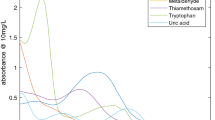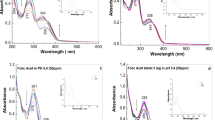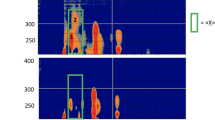Abstract
PHOTOCHEMICAL studies of aqueous solutions of organic compounds are being carried out at this Laboratory using the 1849 Å. radiation emitted by a low-pressure mercury resonance lamp. It has been found necessary to eliminate the contribution of the intense 2537 Å. line emitted by such a source. This has been done by using a filter of irradiated lithium fluoride. The idea of using this material as the filter for mercury resonance radiation was suggested tous by P. Yuster of this Laboratory. The absorption spectrum of X-irradiated lithium fluoride shows a sharp band with a maximum at 2420 Å. due to the formation of F-centres in the crystal1. Even with complete absorption at this wave-length, the transmission of the irradiated crystal remains high at 1849 Å.
This is a preview of subscription content, access via your institution
Access options
Subscribe to this journal
Receive 51 print issues and online access
$199.00 per year
only $3.90 per issue
Buy this article
- Purchase on Springer Link
- Instant access to full article PDF
Prices may be subject to local taxes which are calculated during checkout
Similar content being viewed by others
References
Pringsheim, P., and Yuster, P., Phys. Rev., 78, 293 (1950).
Kato, R., Nakashima, S., Nakamura, K., and Uchida, Y., J. Phys. Soc., Japan, 15, 2111 (1960).
Author information
Authors and Affiliations
Rights and permissions
About this article
Cite this article
WEEKS, J., GORDON, S. & MEABURN, G. Irradiated Lithium Fluoride as an Optical Filter in the Far Ultra-Violet. Nature 191, 1186–1187 (1961). https://doi.org/10.1038/1911186a0
Issue Date:
DOI: https://doi.org/10.1038/1911186a0
Comments
By submitting a comment you agree to abide by our Terms and Community Guidelines. If you find something abusive or that does not comply with our terms or guidelines please flag it as inappropriate.



